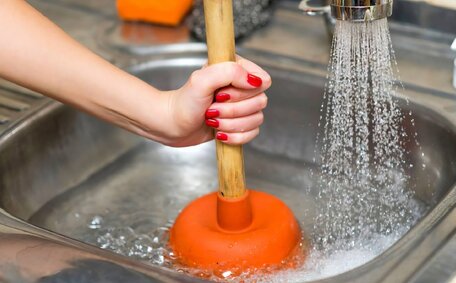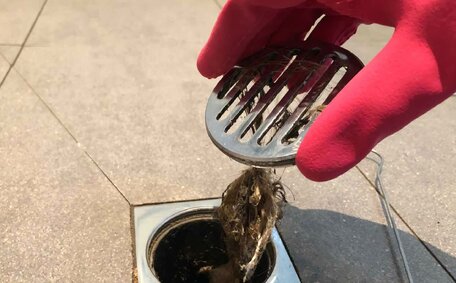What is an Anode Rod and How Does it Work?
An anode rod is a crucial component found inside most water heaters. It is a metal rod, usually made of aluminium, magnesium, or zinc, that works to prevent corrosion and extend the life of the water heater tank. The anode rod operates through a process called sacrificial anode corrosion protection.
The metal of the anode rod is more chemically reactive than the steel tank itself. As the anode rod corrodes over time, it must be periodically replaced to keep protecting the water heater.
In essence, the anode rod 'sacrifices’ itself to prevent corrosion of the tank. This causes it to corrode more readily, which protects the tank from corrosion damage.
Why are Anode Rods Important for Water Heaters?
Anode rods play a crucial role in protecting the longevity of your water heater tank. Without an anode rod, your water heater would be prone to severe corrosion damage leading to premature failure. The anode rod helps prevent this by attracting corrosion to itself instead of the tank.
Most water heater tanks are made of steel.
While steel is strong, it is susceptible to corrosion when exposed to water over time. While steel is strong, it is susceptible to corrosion when exposed to water over time. However, the anode rod provides cathodic protection by providing an alternative metal for the corrosion reaction to attack.
Since the anode rod is made of a more reactive metal like aluminium or magnesium, the corrosion preferentially occurs on the rod rather than the tank. The anode rod corrodes over time and needs regular replacement, but saves you from having to replace the entire water heater due to corrosion damage.
This sacrifices the rod but saves the tank.
Installing an anode rod when you purchase your water heater and replacing it every 2-4 years as recommended, is essential preventative maintenance. It will maximise the working life your water heater and avoid the high costs and hassle of unexpected repairs or early replacement.
Types of Anode Rod Materials
Magnesium Anode Rods
Magnesium anode rods are the most common type used in water heaters. Magnesium anode rods are the most common type used in water heaters. Magnesium anode rods are suitable for areas with moderately hard water.
However, they tend to corrode faster than other types. They typically need replacing every 2-4 years.
Aluminium Anode Rods
Aluminium anode rods last longer than magnesium ones, typically 4-6 years before needing replacement. Aluminium rods provide excellent protection in areas with very hard water.
They are also more expensive. The aluminium corrodes before minerals can damage the tank.
Zinc Anode Rods
Zinc anode rods are best suited for soft water areas. They are less reactive than magnesium, so last 4-6 years on average. Zinc rods provide good protection at a moderate cost. They are a good choice if your water isn’t very hard.
Magnesium
Magnesium anode rods are often the best choice for water heaters in homes with relatively soft water. Magnesium is less noble than other anode rod materials like aluminium and zinc. This means magnesium corrodes more readily in water, providing superior cathodic protection.
In soft water areas, magnesium rods tend to last 2-4 years before needing replacement. The softer water minimises mineral buildup on the rod, allowing the magnesium to corrode slowly and steadily while protecting the tank.
Magnesium anode rods are also an economical option. They cost less than aluminium or zinc rods while still providing corrosion protection. This makes them a good choice for budget-conscious homeowners who want to maintain their water heater’s longevity.
When it comes time for replacement, magnesium anode rods are straightforward to install yourself. The most common size fits with a standard 1 1/16” socket wrench in most cases. With proper care and maintenance, a magnesium anode rod can help ensure a long service life for your water heater tank.
Aluminum
Aluminium anode rods are a common choice for water heaters in hard water areas. This can accelerate corrosion of metal surfaces like the water heater tank. Aluminium anode rods are made of a more reactive metal that serves as a sacrificial barrier.
Hard water contains high mineral content and dissolved salts.
When the water interacts with an aluminium anode rod instead of the tank, it causes the aluminium to progressively corrode over time instead. This spares the steel tank from corrosion damage. Aluminium anode rods may last 4-6 years before requiring replacement in hard water conditions.
The aluminium material essentially ‛takes one for the team’ to prevent premature failure of the water heater due to corrosion. While relatively more expensive than magnesium rods, aluminium’s longevity in hard water makes it an investment that pays off in the long run.
Aluminium anode rods sized 1 1/16” to fit most heaters are readily available. Replacing them every 4-6 years or so extends the tank’s service life considerably. For areas with hard water, aluminium rods are a smart preventative maintenance choice.
Zinc
Zinc anode rods can be an effective option for water heaters that contain high levels of sulphur or bacteria. The zinc material is more reactive than steel and provides sacrificial cathodic protection. Zinc rods corrode preferentially, attracting corrosion away from the tank.
In water with excess sulphur, the zinc neutralises the sulphur’s damaging effects through corrosion of the rod. Sulphur can react with the tank and create a rotten egg odour if left unchecked. The zinc rod counteracts this.
Zinc also disrupts bacteria growth inside the heater when present in large amounts. As the zinc corrodes, it releases ions that inhibit bacteria from thriving and creating biofilm buildup.
Overall, zinc rods are a proactive solution for odour and bacteria issues in some water heater systems. They commonly last around 4-6 years before replacement is needed, while protecting the tank integrity.
Locating and Inspecting Your Anode Rod
Locating the anode rod in your water heater is the first step to inspecting its condition. In most heaters, the anode rod can be found protruding from the top of the tank. It usually has a hex head that allows a socket wrench to remove it.
Before accessing the anode rod, turn off power to the water heater at your home’s circuit breaker. Then, locate the hex head at the top and use a 1-1/16 inch socket wrench to loosen and unscrew the rod.
Turn off the water supply as well. Place a bucket under the tank to catch any drips.
With the anode rod removed, inspect its condition. A new rod will be silver-coloured. With the anode rod removed, inspect its condition. A rod that’s more than 50% corroded needs replacement.
You can measure a rod’s diameter and compare it to the new size to estimate corrosion level.
Check the inner threads of the tank opening for rust or damage which can indicate a failing anode rod. Reinsert a depleted rod temporarily if the water heater needs to be turned back on before installing a new rod.
Regular anode rod inspection allows you to be proactive about replacement before corrosion reaches the tank. Catching it early helps ensure your hot water system stays in good working order.
When to Replace Your Anode Rod
There are a few key signs that indicate it’s time to replace your water heater’s anode rod:
- Visible corrosion - If inspecting the rod shows extensive pitting or corrosion, replacing it is recommended. Over 50% corrosion usually means replacement is needed.
- Age - Rods should be replaced every 2-4 years as routine maintenance, depending on your water type.
- Reduced efficiency - If your hot water supply seems to run out faster, the anode rod may not be protecting the tank adequately.
- Odour issues - A sulphurous rotten egg smell can mean the rod needs replacing.
Replacing your water heater’s anode rod as recommended every few years ensures it can properly protect your tank from corrosion damage over the long run.
How to Replace an Anode Rod
Replacing an anode rod is a straightforward DIY project for most homeowners if proper precautions are taken.
- Turn off power to water heater and turn off the cold water supply line.
- Open the hot water tap to depressurize the tank.
- Place bucket under the tank to catch drips.
- Using 1-1/16" socket wrench, unscrew the anode rod hex head counterclockwise.
- Remove old rod. Inspect condition and measure diameter.
- Apply thread sealant to new anode rod threads.
- Screw in new anode rod tightly and secure with wrench.
- Turn cold water supply back on and check for leaks.
- Restore power to water heater.
- Flush tank until water runs clear.
Replacing the anode rod extends the life of your water heater and protects its integrity. Doing it yourself saves on service fees. However, if you don’t feel comfortable accessing internal components of your water heater, hire a professional plumber.
Refilling and Restoring Your Water Heater
After replacing the anode rod, the final steps are refilling and restoring your hot water system. After replacing the anode rod, the final steps are refilling and restoring your hot water system. Open hot water taps to bleed air from the lines until water runs steadily. Check for any leaks.
Turn power/gas back on to the water heater. Turn power/gas back on to the water heater. Turn power/gas back on to the water heater. Let the tank fully reheat which may take several hours.
Once heated, run hot water taps to flush the tank until it runs clear.
The new anode rod will now protect the tank by attracting corrosion to itself. Regularly checking and maintaining your hot water system will maximise its lifespan. Simple preventative care like anode rod replacement avoids much more costly repairs down the road.
But remember, rods still require replacement every few years.
If maintaining your water heater seems daunting, contact a professional plumber. They can inspect, test and replace the anode rod. Proper maintenance is crucial for a long-lasting water heating system.





